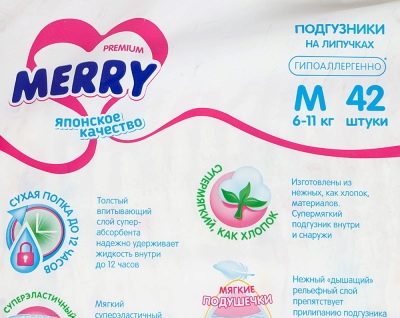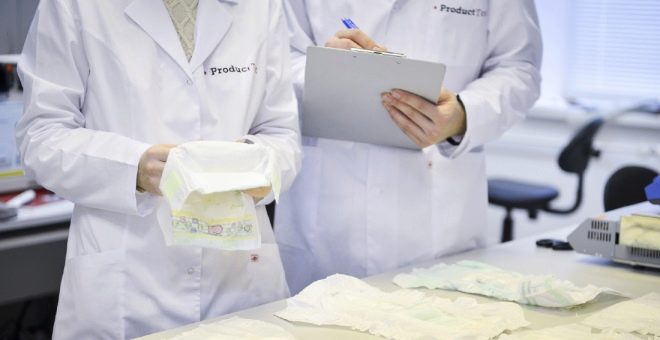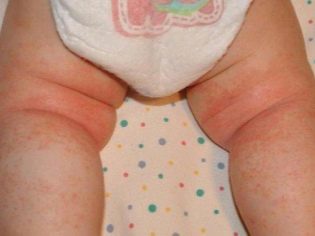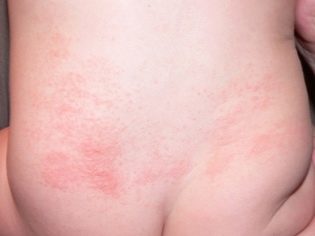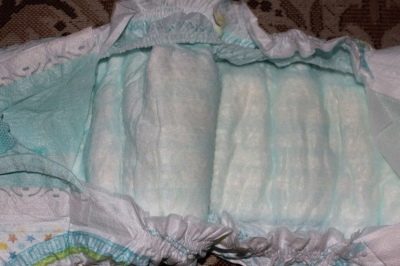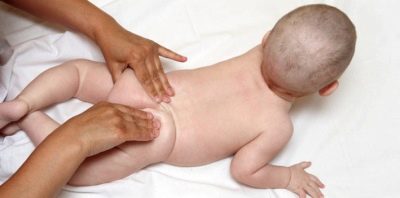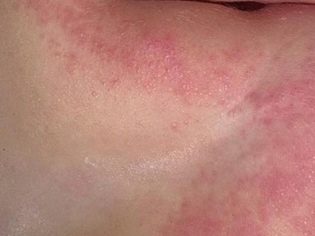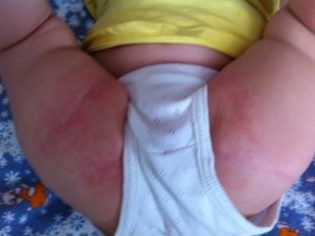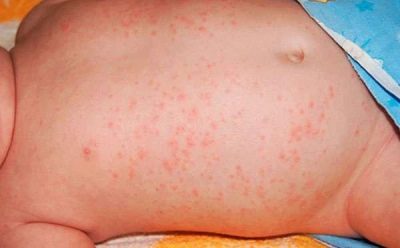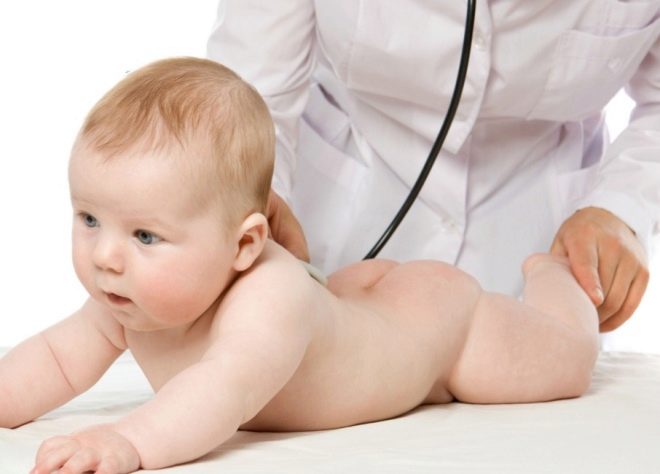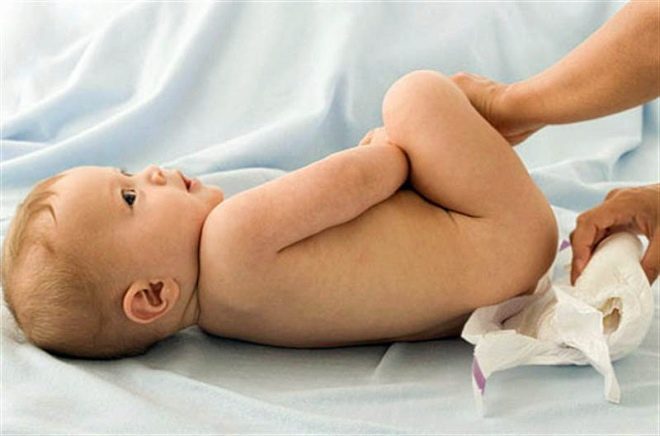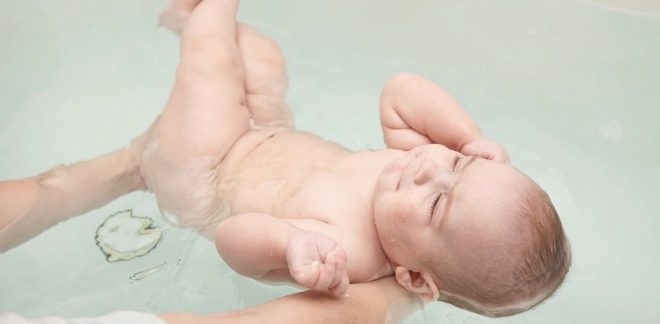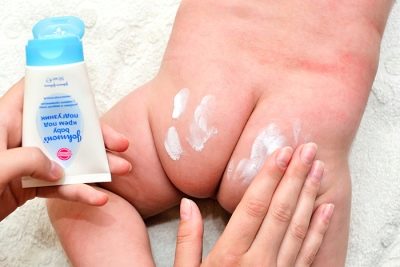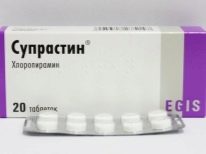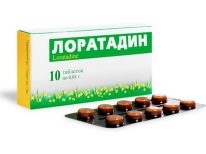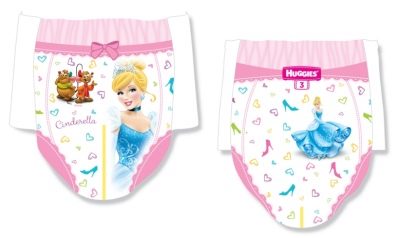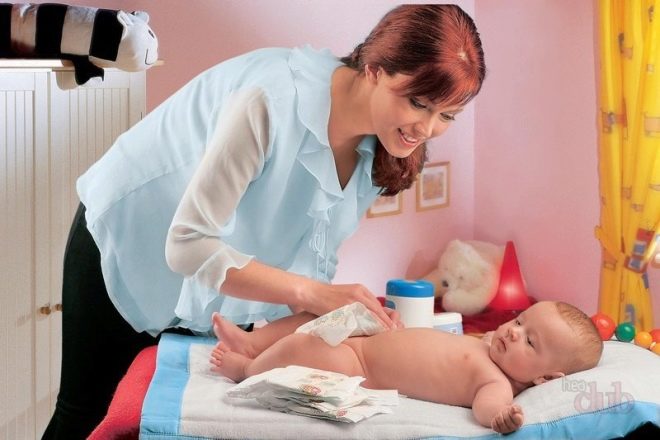What does a diaper allergy look like and how to treat it?
The body of a small child after birth begins to gradually get used to the new habitat, to adapt to the huge variety of viruses, bacteria that inhabit it, as well as to allergens. That is why allergic reactions at an early age are so widespread.
The most common allergy is manifested in food, plants and their pollen, medicines. But there is also a separate type of allergic reaction - an allergy to diapers that are so necessary for a child. How it manifests itself and how to treat it, we will tell in this article.
How does it manifest itself?
Large manufacturers of diapers are trying to control every stage of the manufacture of their products. Special attention is paid to dermatological tolerances and examinations. Only the last series of tests diapers are entitled to put on the package mark "hypoallergenic".
Let's hurry to disappoint parents who are accustomed to trust written on the package. There is no single standardization system for this parameter in the world. Each manufacturing company has its own laboratories, which conduct tests for hazardous components that can cause allergies. Therefore, no mark on the packaging can guarantee that these products will not cause an inadequate reaction to the child.
If the baby’s tender skin comes into contact with substances that are allergenic to him, the reaction will not take long to wait. It appears localized - where the skin is in contact with the diaper, but because it is quite similar to the usual contact dermatitis. When the symptoms of allergy are ignored for a long time, a deeper, systemic sensitization of the body is possible with the spread of the characteristic signs of an allergic reaction to other parts of the body.
Inadequate reaction of the child's body to diapers is difficult to confuse with something else. Irritation occurs in the diaper's coverage area. Most often, rashes, peeling, redness are observed after long wearing diapers, for example, after a night spent in it. The strength and intensity of the lesions will depend on the degree of sensitization caused by inadequate response of the child's immunity to the protein-antigen.
There may be a superficial small rash, and small sores may form. Swelling, erythema is observed at the site of injury.
The girls often swell the labia, the boys turn red and swell the testicles and penis. Quite a common situation in which affects not one area of the skin, and immediately the genitals and buttocks, as well as the skin surrounding the anus. Looks like a rash focal rash, prone to fusion.
In newborns and babies up to one year, diaper allergy often causes sleep disturbances, expressed anxiety, itching and pain prevent the baby from quietly playing, crawling, walking, he begins to act up.
In some cases, the places of greatest contact are affected - the abutment points of the diaper. With a spilled form of allergy, the temperature may rise to subfebrile values (37.0-37.8 degrees).
Types of allergens
Why does allergy develop, what could be an allergen in a diaper? The main irritating factor, according to pediatricians, are aromatic additives, fragrances, which saturate some types of diapers. Also, components of the gel-impregnated absorbent layer of this hygiene item can be allergenic.
Some not the most responsible manufacturers For the best water-repellent effect of the outer layer of a disposable baby diaper, chemical compositions are used, which have an irritating effect when sweat hits them. If the baby starts to sweat, it is likely that a strong allergic reaction will be triggered.
Self-respecting manufacturers of large brands usually do not use such substances, because they are prohibited by WHO for children's use, but parents are at great risk when buying inexpensive and little-known brands of diapers: such products are not subject to standardization, and therefore they, in fact, buy “a cat in a bag ".
Grieve and those who choose only well-known brands. Today the market has a lot of fakes, the safety of which for children's health is a big question. Neither the pharmacist in the pharmacy nor the seller in the store may know that the diapers are not real. Usually, along with diapers, the accompanying documents for the whole lot are also quite well forged.
How to distinguish from other diseases?
If a child has symptoms of allergy, parents need to understand as soon as possible what the baby has such an inadequate reaction in order to eliminate contact with the allergen and not to aggravate the child’s condition. Therefore, it is recommended to make sure that the red rash on the legs or genitals of the child is of an allergic origin.
Differential diagnosis is carried out through careful observation. Allergies can "mask" genital herpes. With the herpes virus of the second type, rashes are found in the child’s groin, but they are different from allergies.
If you look closely at the individual elements of the herpes rash, you will notice small blistering heads filled with clear or cloudy liquid. When allergies such bubbles are not formed, they are caused by herpesvirus.
You should also distinguish between allergies to diapers and diaper dermatitis. Despite the similar name, the causes that cause diaper dermatitis are somewhat different. Skin irritation and diaper rash do not appear because of the immune response to the protein antigen, but because of local inflammation due to prolonged skin contact with urine or feces.
With diaper dermatitis, diaper rash may look like weeping eczema, and may be dry, whereas with allergies, the inflamed areas are always dry. Poor hygiene, poor baby care are the main causes of diaper dermatitis. Such diaper rash has nothing to do with the quality and hypoallergenic diapers that the baby wears.
Distinguishing infectious rashes from diaper allergies is quite simple. In case of inadequate response to the components in the diaper, the rash and erythema are located exclusively in the area covered with diapers.
With any viral infection, the first elements of the rash may appear anywhere, but within a few hours the rash will spread over the body in a big way and will be found anywhere. In addition, an infectious rash is most often accompanied by additional symptoms - fever, nausea and vomiting, and respiratory symptoms.
There is a simple and functional home test that will help parents understand the true nature of strange redness and rash in the area of the toddler's groin. If the baby is washed up with warm water and baby soap and left without a diaper for an hour or two, the diaper dermatitis will immediately subside - the lesions on the skin will begin to decrease and turn pale.
The infection during this time will have time to begin spreading to other skin, and only the allergy will remain almost unchanged, since to eliminate its symptoms it is necessary to limit the wearing of the diaper for more than a couple of hours.
What should parents do if they find a rash and redness in the child’s groin? After self-examination, you can call a doctor and tell him about your suspicions, and you can treat the child yourself. For herpes simplex virus type 2, a doctor is needed, but for an infectious rash, too.
Diaper dermatitis and minor allergies can be treated on their own, but if the allergic reaction is strong and extensive, it is better to consult a doctor, since local treatment alone may not be enough, you will need systemic anti-allergy medication or hormone therapy.
If allergy is manifested in a newborn who is not yet one month old, the doctor must be called in any case, regardless of the results of self-diagnosis.
First aid
Parental actions when detecting diaper allergies in a child should be smooth and quick. First of all, you need to save the child from further contact with the substance that caused the allergic reaction, that is, remove the diaper.
Next you need to undermine the child. Water should not be cold or hot. The optimum water temperature is 37 degrees above zero. Contrary to the advice of friends and relatives, do not rush to prepare for the baby a bath with decoction of medicinal herbs. Water with a decoction of pharmaceutical chamomile will have a good anti-inflammatory effect in diaper dermatitis, but in allergies the use of herbal remedies is contraindicated, the manifestations of allergies may increase.
Purge the child with contact allergies without the use of detergents, only a small amount of hypoallergenic baby soap is acceptable.
It is best to carry out a hygienic procedure with boiled water in advance, since tap water contains chlorine used by cleaning stations to disinfect the liquid. And chlorine only increases the allergies and may eventually lead to the development of atopic dermatitis.
Avoid hard towels. Do not wipe, but blot affected skin with a soft flannel diaper after washing. Leave the groin area open for 10-15 minutes. Air bath does not hurt the child.
Do not rush to clothe the child in a disposable diaper. Optimally a few days to use the usual gauze diapers, which can be purchased at any pharmacy or children's store. Yes, they will have to be changed and washed frequently, but the result is worth it.
If necessary, you can use systemic and external medications to cure allergy symptoms. Only after the complete disappearance of irritation and rash can a new diaper be selected for the child. About how to treat allergies to diapers, tell in more detail.
Treatment
Parents should understand that, in principle, it is impossible to cure allergies, it is possible to save the infant from its unpleasant symptoms. Only time will cure her - with age, 97% of children “outgrow” their allergic reactions, and diapers are a temporary phenomenon in the baby’s life.
To begin with, parents should remember that reddening after wearing a diaper cannot be lubricated with alcohol solutions, “burned” with any drying compositions, and drying creams are also excluded.
Zelenka, iodine, hydrogen peroxide, a solution of potassium permanganate, which is in every home first aid kit, should be left for another case. For the treatment of childhood contact allergies, these funds are not suitable. Oily creams are also not suitable for the local treatment of the affected skin of the inguinal zone.
The following ointments and foams are recommended for local treatment: “Bepanten"," Drapolen "," Desitin. "They have a pronounced healing effect, as well as prevent infection of the affected areas with pathogenic bacteria. Apply funds need light movements on clean and dried skin.
If allergic manifestations are strong, the doctor may recommend antihistamines: "Fenistil" (drops and ointment), "Suprastin" (tablets), "Loratadine". The exact drug depends on the age of the child and the individual characteristics of his health. The dosage is also prescribed by a doctor.
For allergies with severe lesions and extensive lesions, ointments based on corticosteroid hormones can be given - “Advantan», «Elokom».
Folk remedies treat contact allergy is not recommended. Medicinal plants, oils, bee products, which have alternative medicine, only strengthen the overall symptoms and exacerbate the situation.
Usually active treatment takes 2-3 days, in severe cases - up to a week. After the skin is clean, parents can return to the diapers, but choose better products.
Tips
After the end of treatment when choosing diapers, pay attention to the manufacturer, the presence of impregnations and additives in the gel layer. It is better to refrain from using diapers or aloe-infused diapers.
Choose diapers that are child-sized. If the rash most in the area of friction with a belt or a rubber diaper, stop the choice on models without stickies. You can choose diapers, panties, and with a clear sexual match - products for boys and girls differ in the location of the absorbent layer.
For the prevention of allergies in the future, remember that it is best to use diapers of the same brand, if it fits the child, you should not experiment with different manufacturers and names without good reason. Permanent diapers rarely cause allergies, mostly only when parents "managed" to buy a fake.
It is not necessary to buy diapers by the piece, because it is not known how and where they were stored after opening the package. Diapers also have their own shelf life, be sure to look at it on the packaging. Overdue diapers can be dangerous for children's skin.
Change the diapers often child, no need to wait until they overflow.
Reducing the risk of developing contact allergies in the intimate area will help compliance with the rules of hygiene, as well as the correct living conditions suitable for a comfortable life of the child: the air temperature in the children's room should not exceed 22 degrees and the humidity should be kept at 50-70%. The hotter the room, the more the child sweats, and the risk of developing an allergy to the diaper increases rapidly.
On how to choose the right diapers, see below.

